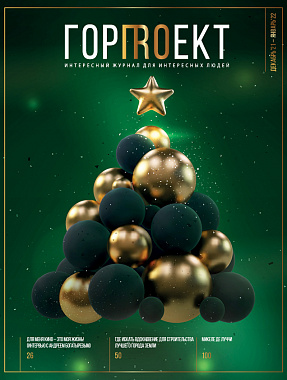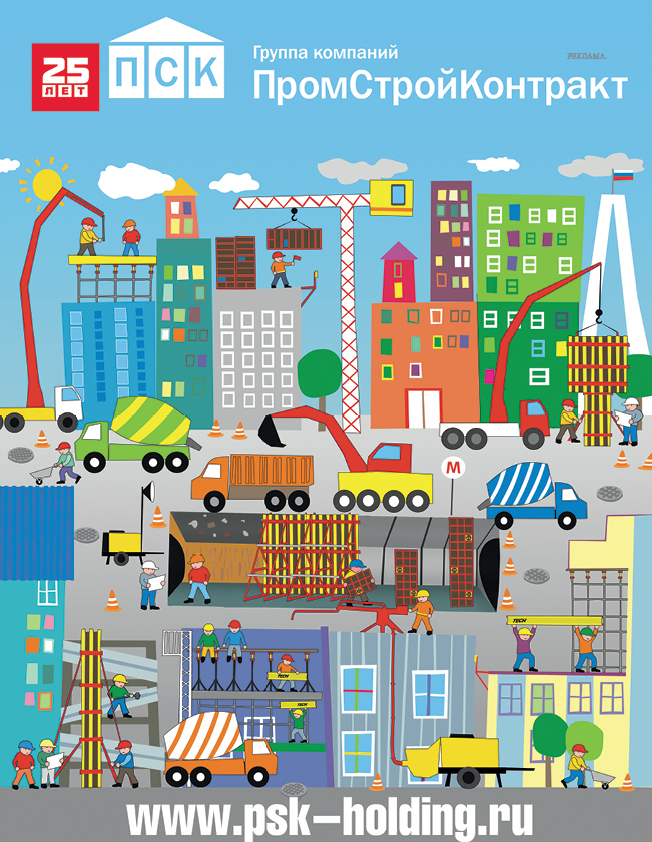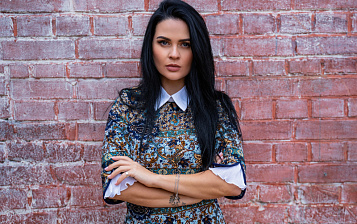The last major domestic architectural festival, which Gorproekt has not yet written about, was the legendary "Architecture" - a large professional review of projects and implementations throughout Russia and other countries with which domestic architects are associated. In October 2021, the magazine’s special correspondent Maxim Kirsanov walked around the venues of the 29th festival together with the engineers of the PSK Group of Companies to see if Russian architects could surprise with something in the post-pandemic new reality. The results of the international review competition, the theme of which was “truth,” were discouraging: not a single implementation of medical facilities even received a diploma, and the experts did not find a worthy project for the Grand Prix - for the first time in more than 10 years. But first things first.
New reality or old truths
On the eve of the new autumn lockdown and record highs for coronavirus, the festival organizers proudly stated that they were able to set a record for attendance (more than 30,000 spectators were able to visit Gostiny Dvor in person) and for the involvement of young people, who were more numerous than ever. This was helped by the continuation of postmodern games with forms - the audience was offered dozens of pavilions and projects, as well as simply works of art.
Unlike last year, the controversial thesis “Architecture is an art, and an architect is an artist” did not meet visitors at the entrance, but the idea itself clearly only grew stronger in the professional community. Special projects and works by the sculptor Leonid Baranov and other artists were scattered throughout the territory, which gave the architectural festival the character of a continuation of Cosmoscow, Artlife and Archstoyanie. It must be admitted that the transformation of domestic architects from technical specialists under the authorities, causing furious disputes among the townspeople, into art figures, and their profile event into a bright show, is not only a natural process (many national schools took place and it was at such events that stars flourished, like Zaha Hadid), but also useful in terms of conveying their ideas to society. In a bright, playful way, professionals in different ways proved to the townsfolk that they were doing “beautiful”, “smart” and “useful”.
In 2021, regional projects were especially distinguished, which also had a record number of 16 instead of the traditional 7-8.
In the expressive pavilions, local urbanists showed a lot of renderings, models and illustrations of Napoleonic plans and a large number of realized ones: from the historical signs of Rybinsk to the temples of the Volga region of the Samara region, from the Omsk new buildings (which greeted the visitor of the pavilion with the Letov slogan “Everything is going according to plan!”) To the brilliantly reconstructed modernist the masterpiece of Kaluga - the local museum of cosmonautics (created with the participation of Korolev himself), which can compete in beauty with the recently completed reconstruction of INION in Moscow.
Another center of the exhibition was the pavilion of Nizhny Novgorod, which brightly reported on the successful celebration of the 800th anniversary this year.
Among the key objects of the anniversary of Nizhny was the “Arsenal” of its Kremlin, which was turned into a branch of the National Center for Contemporary Art in 2015 and then received the Grand Prix of “Zodchestvo” for the best implementation - the “Golden Daedalus”. This year also found a place for a similar project, which we will discuss below. The “Silver” in the field of projects, which received the concept of revitalization of the tourist center of Veliky Novgorod, is also noteworthy, so the trend started by the once modest by today's standards celebration of the 350th anniversary of Irkutsk (whose project for the reconstruction of the historical center received the very first “Vladimir Tatlin Prize ") will be continued.
Actually, the curator of the festival "Architecture" was a bright representative of regional Russian architecture - the chief architect of Kaluga Alexei Komov, who diluted a long line of curators of the festival from the capital. “When I conceived the topic, I remembered the legend that truth is a mirror invented by God. It broke, and each of us began to carry its fragment in ourselves ... It seems ... the time has come to unite these fragments in order to find together the path that will lead us to the future. We, architects, must not forget our role, both public and creative. We serve a calling. This is the Truth of architecture,” he commented on his concept. According to the organizer, at least 30 regions will be able to take part in the next 30th anniversary "Architecture" in 2022. Regardless of whether this impulse can be realized, it cannot but be welcomed - finally, Russian architecture has gone beyond the boundaries of the two capitals, their extended "agglomerations" and periodic tours of capital stars to the regions. These include the Saratov and Novosibirsk airports awarded in previous years and lesser-known projects, such as the Kulikovo Field Museum (which won the Architecture-2016 Grand Prix for the well-known Muscovites co-author of the buildings of the Taganka Theater and the Pyotr Fomenko Workshop, Sergei Gnedovsky) or the Museum of Science and Technology in Tomsk (performed by the St. Petersburg Studio 44), which received the Tatlin Prize in 2015. Actually, the main intrigue of “Architecture-2021” turned out to be connected with the main prizes - the main prize for the project was never awarded to anyone.
How not to offend anyone in architecture
A bit about architectural awards. Unlike other areas of human activity, where the pursuit of major awards is common, Russian architects are traditionally friendly to each other and generously reward colleagues with commemorative signs, certificates and medals due to the many categories of architecture. From this complex puzzle, the picture of a slice of modern architecture is formed as a result. However, even a professional eye is not needed to see that this picture is extremely uneven.
This year's winners include the Sirius Educational Center for Gifted Children (St. Petersburg's Studio 44), which finally turned the former Sochi Olympics media center (built in record time using PSK-CUP volumetric formwork) into one of the most modern educational centers of the country.
But, for example, there are no new buildings of Moscow State University and Skolkovo technoparks, which most likely will be the locomotive of science in Russia (although last year, in contrast to them, the Tatlin Prize for the best project was given to the ITMO concept - the “St. Petersburg answer to Skolkovo” made in the spirit of the Suprematists). It is no coincidence that vaccines that have received worldwide recognition appeared primarily in the Skoltech medical cluster. Industrial architecture and infrastructure facilities are presented by Zapsibgazprom's project of a new wintering complex for the Vostok station, similar to a science fiction film about the conquest of Mars.
This project really inspires respect, but where are the even more incredible facilities of NOVATEK’s Artik LNG-2 or the Amur GPP, launched this year, perhaps? It is clear that in a huge, constantly under construction country it is impossible to cover everything, and one can see how the experts of "Zodchestvo" are trying to manage to find architectural masterpieces in all categories, preferring small, but expressive forms to mega-projects.
For the traditional improvement of cities, the authors of the Klyazma River embankment, along the former Morozovskaya manufactory in Orekhovo-Zuyevo, were awarded, apparently on the principle of an Oscar or Nobel Prize, offering viewers to look at something unusual, even for lovers of domestic tourism. Pavilion No. 2 of the Nizhny Novgorod Fair sends greetings to a lover of modernist architecture, reminiscent of half of the buildings built in the 1960s and 1970s.
The best residential complexes, as is customary at the Festival, were found in St. Petersburg, they were announced by the residential complex "Fortecia" in Kronstadt and the residential complex "Y'ES Marata". As a greeting to especially remote regions, they presented VILLA E, a country house similar to those in the Baltics or New Riga, but in Kamchatka. Attention to bridges was also fundamentally focused on small forms.
In a country where a giant 4th bridge is being built across the Ob and even larger bridges are being designed to Sakhalin and across the Lena in Yakutsk, where dozens of artificial structures are being erected right now for the high-speed M-12 highway to Kazan, experts, as if wanting to surprise bridge builders, awarded pedestrian bridges and embankments of Moscow and the metropolitan area "GAU NI and PI Gradplan".
As Elena Skripkina told us during an interview, the head of the architectural and planning department of this organization, among her 5 diplomas, there was even a bridge designed for the Netherlands - consisting of 2 inhabited spheres, a bridge across the Hey Bay, the new “floating gates of Amsterdam”.
One gets the feeling that, having felt themselves creators, artists, the leading architects of Russia are trying to distance themselves from the mainstream of the state with its megalomania.
The only exception was the Grand Prix of the festival in 2021, where the authors of the Big Circle Line stations were awarded, the test launch of the main part of which is expected before the end of 2021. Coincidentally, Nikolai Shumakov, President of the Union of Architects of Russia and Moscow, received the award.
He, according to the organizers, did not take part in voting for himself. But the exception only confirms the rule - the clear desire of the architectural community to hide from the mainstream. It is no coincidence that for the first time in 10 years it was announced that there was no one to give one of the grand prix - the "Tatlin Prize" for the best project.
The last time this happened was in 2010, when the jury stated that there were no worthy buildings among the completed buildings. This is a dichotomy of architects who are as loyal as possible to the authorities (it is no coincidence that one of the most touching projects of the Truth in Love exhibition was devoted to quotes from Alexander Kuzmin, the chief architect of Luzhkov's Moscow), but at the same time dreaming of changing the atmosphere around. The classic desire of the artist (how symbolic that the chief architect of Moscow just in October opened his first purely art exhibition in the Triumph gallery in the capital), into an existential impasse in which the jury seems to have fallen. In addition, they could add pessimism to the fact that out of the last 10 winners of the Grand Prix, a little more than half turned out to be quickly sold. Including even such chamber projects as the Entry sign to the city of Yakutsk in the form of a prison made of copper pipes and the residential complex "RASVET LOFT STUDIO" in Stolyarny Lane of the capital were delayed. The latter well conveyed the love of the festival jury for the motives of the Northern capital and brick cladding, but according to the Hamburg account, it is unlikely that he added anything to the architectural palette of Russia. However, whether this is so, only time and the talent of the builders in the implementation of bold architectural ideas will show.
Where 29 is there and 30
The oldest domestic manufacturer of formwork and scaffolding, PromStroyKontrakt Group of Companies, with whose representatives we are discussing the past architectural forum and the Zodchestvo festival, are peers, both phenomena of the Russian architectural and construction market are 29 years old, both originate from the beginning of the modern history of Russia and, together with their the country experienced patriotic ups and downs and moments of uncertainty. Behind the search for "eternity", "recontext", "new industries" and other past topics announced by the former curators of "Zodchestvo", new large-scale and chamber projects are ahead and there is no doubt that they will still receive well-deserved grand prix, marking the synchronization of tastes of experts and construction trends countries.


 DOWNLOAD
DOWNLOAD LOOK
LOOK
 Top Content of the Month
Top Content of the Month


